Delicata squash is one of the most versatile ingredients in the kitchen, as its sweet and creamy flesh can be cooked or eaten raw.
However, if you don’t have any on hand or it’s not in season, don’t fret – plenty of other vegetables make great a substitute for delicata squash!
From butternut to kabocha to acorn squash, each offers a slightly different flavor and texture profile that will take your dish from mundane to magnificent.
In this blog post, we’ll detail some of the best replacements for delicata squash, along with helpful cooking tips so you can incorporate them into your favorite recipes.
What Is Delicata Squash?
Delicata squash is a popular winter squash variety with cream skin and yellow and green stripes.
It’s usually about 6 to 8 inches long and generally weighs between 1 to 2 pounds.
Delicata squash has a distinct flavor and creamy texture, making it an excellent addition to many recipes.
Delicata squash is an incredibly versatile ingredient that can be used in many different.
It makes a great side dish when roasted, and it’s also delicious, pureed into soups or mashed with other vegetables.
Add cooked squash cubes to frittatas or quiches for added texture and flavor.
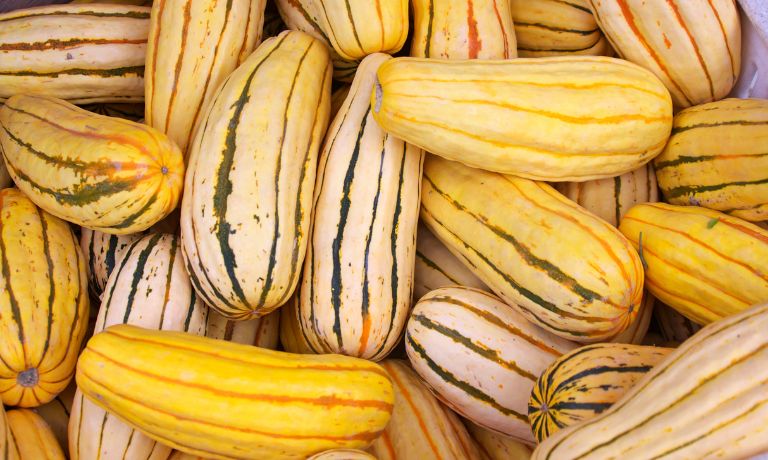
Substitutes For Delicata Squash
Many options are available if you are looking for a substitute for delicata squash. Some of the most popular substitutes include:
Acorn Squash
Acorn squash is a winter squash with thick, dark green skin and deep yellow-orange flesh.
Its flavor is slightly sweet and nutty, making it popular for savory dishes like soups and stews.
Acorn squash can also be roasted or baked and served as a side dish with butter and herbs for a delicious autumn meal.
It can also be mashed and used in baking, such as pies or cakes.
Additionally, the squash’s seeds can be roasted for a crunchy snack.
Acorn squash is an excellent source of vitamin A, potassium, dietary fiber, and other essential minerals and vitamins that help to promote overall health.

Spaghetti Squash
Spaghetti squash is a variety of winter squash with an oblong shape and yellow-orange flesh.
It can be easily shredded into thin strands resembling spaghetti noodles when cooked.
Its mild flavor makes it versatile and a great recipe stand-in for pasta.
It’s often used in lasagna, stir-fries, soups, salads, casseroles, and even mac ‘n’ cheese.
Spaghetti squash can be roasted, boiled, steamed, grilled, or microwaved.
It is high in vitamins A and C, dietary fiber and a good source of manganese and potassium.
In many recipes, spaghetti squash can also be used as a substitute for delicata squash.
When selecting a spaghetti squash at the store or farmers market, look for one that is heavy for its size and has a hard, dull-colored rind.
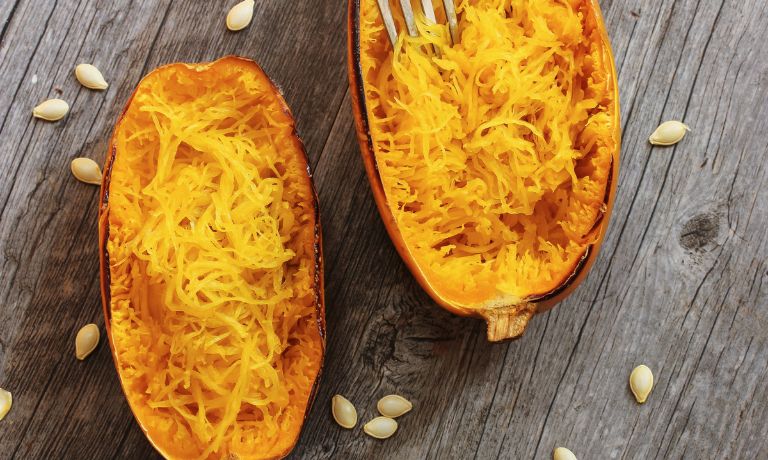
Buttercup Squash
Buttercup squash, Banana squash or Kumara is a type of winter squash belonging to the Cucurbita family.
It has a dark green exterior and typically grows to between 4-5 pounds, with some varieties growing up to 10 pounds.
The flesh inside is bright yellow-orange in color and has a sweet yet nutty flavor.
Buttercup squash can be used in many recipes, from soups and stews to casseroles and side dishes.
It is especially popular when roasted, bringing out its sweet flavor.
The flesh becomes soft and creamy when cooked, making it perfect for mashing or pureeing into sauces.
Buttercup squash can also be cubed and added to salads, curries or stir-fries.
It is an excellent source of dietary fiber, vitamin A, potassium, calcium and magnesium.
Its high antioxidant content makes it a healthy choice for everyone.

Butternut Squash
Butternut squash is a type of winter squash that is harvested in the fall and can be stored for long periods.
It is an excellent source of vitamins A and C, potassium, dietary fiber, manganese and magnesium.
Its creamy flesh has a mildly sweet flavor similar to a pumpkin or sweet potato.
Butternut squash can be used in various recipes, from soups and stews to roasted veggies and casseroles.
It can also replace mashed potatoes for a healthier side dish.
When cooked, butternut squash goes well with savory flavorings such as rosemary, garlic, sage, and nutmeg.
To prepare the squash, cut it in half lengthwise, then scoop out the seeds.
Cut the squash into cubes or slices and roast, steam, mash, or purée for desired consistency.
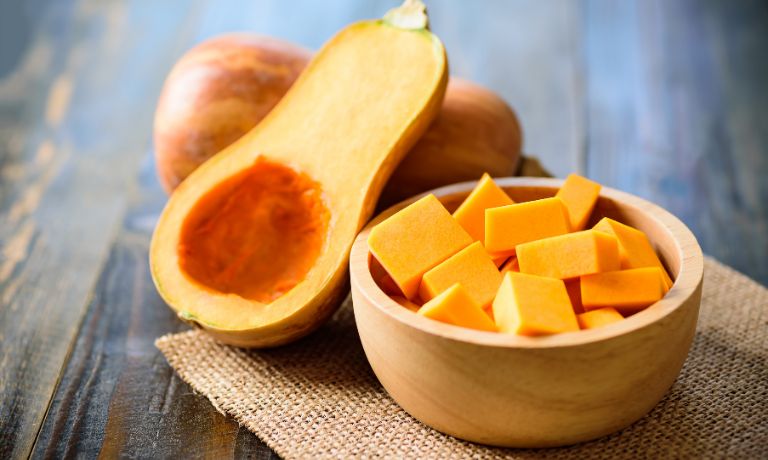
Carnival Squash
Carnival squash is a hybrid winter squash with a sweet, nutty flavor and creamy texture.
Its colorful rind ranges from yellow to orange, and its shape resembles an acorn or pumpkin.
Carnival squash can be used in many different ways in cooking.
Popular uses include roasting, baking, steaming, mashing, stuffing, grilling, sautéing, and pureeing.
It can be used in soups, stews, stir-fries, salads, side dishes, casseroles, and desserts.
Carnival squash can also be baked and stuffed with a savory filling or served with butter and brown sugar for a delicious treat.
In addition to its culinary uses, Carnival squash is high in fiber and beta-carotene, making it a healthy addition to any meal.
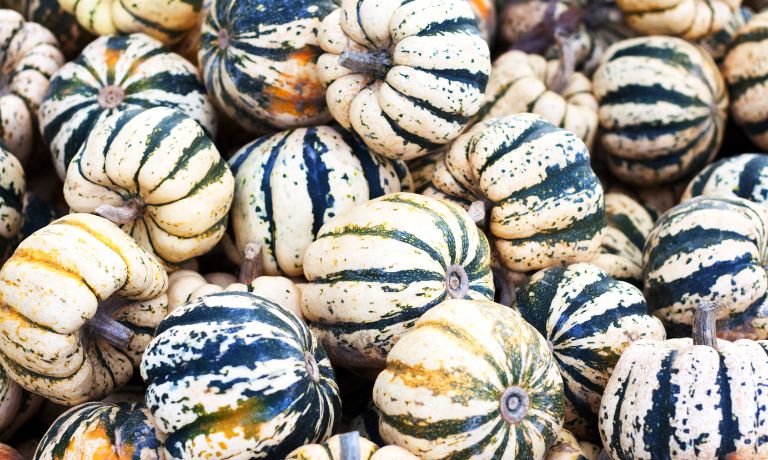
Kabocha Squash
Kabocha squash can be an excellent substitute for Delicata squash in many dishes.
Kabocha squash is a winter with green skin and intensely sweet, dense flesh.
It’s native to Japan and widely used in traditional dishes such as tempura and simmered.
The flavor of Kabocha has been described as a mix between sweet potato and pumpkin.
It can be steamed, boiled, mashed, roasted, or even deep-fried.
It can also be used as an ingredient in soups and stews and added to curries, stir-fries, pies, and cakes.
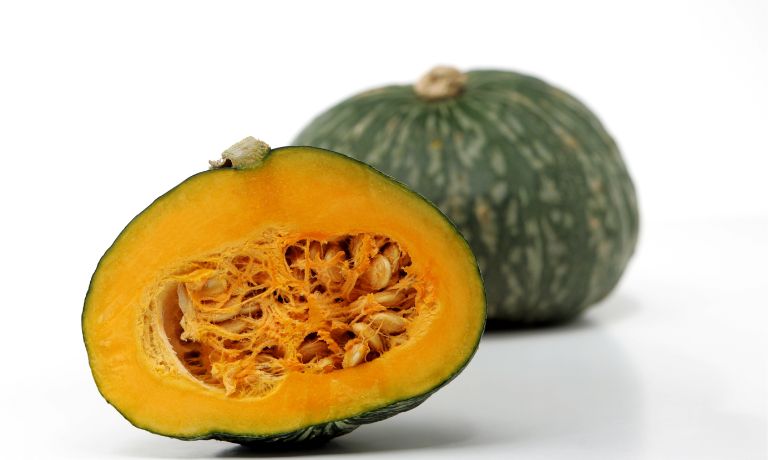
Sugar Pumpkin
Sugar pumpkin, or pie pumpkin, is a type of winter squash with smooth, sweet flesh that makes it ideal for baking and cooking.
It has a deep orange-red color and its shape varies from oblong to round.
Sugar pumpkins are typically smaller than regular pumpkins, but they still have the same flavor as larger varieties.
They can be used in various recipes, including pies, soups, stews, risotto, and mashed potatoes.
The flesh can also be roasted or pureed to make sauces or used in baking muffins and bread.
Sugar pumpkins have a high fiber content, making them an excellent vegetable choice for those looking to increase their daily intake of fiber.
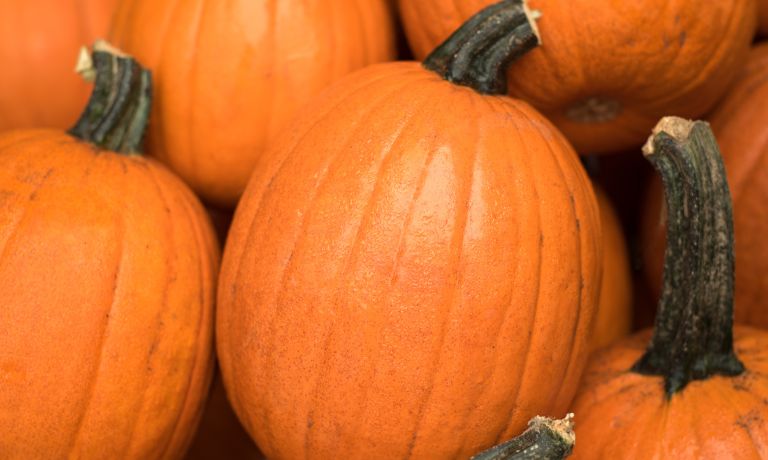
FAQs
Is Acorn Squash Similar To Delicata Squash?
Yes, acorn squash and delicata squash are similar in many ways.
They both belong to the same species of Cucurbita and have similar nutritional profiles.
Is Butternut Squash Similar To Delicata Squash?
Yes, both butternut squash and delicata squash are members of the Cucurbitaceae family.
Both have a sweet, nutty flavor, a creamy texture when cooked, and bright yellow-orange flesh.
Is Yellow Squash Similar To Delicata Squash?
Yes, yellow squash and delicata squash are similar in taste and texture.
Both have a sweet, nutty flavor and a creamy texture. They can be used interchangeably in recipes.
Conclusion
Delicata squash is a unique variety of winter squash that offers various health benefits and culinary possibilities.
Its mild flavor suits sweet and savory dishes like soups, casseroles, and sides.
While Delicata squash is not available year-round, many other types of squash can be used in its place.
Butternut squash, carnival squash, kabocha squash, spaghetti squash and sugar pumpkin are all viable options to substitute for delicata squash that can add nutrition to your dishes.
With these substitutes, you can enjoy Delicata-like flavors even when it is not in season!

